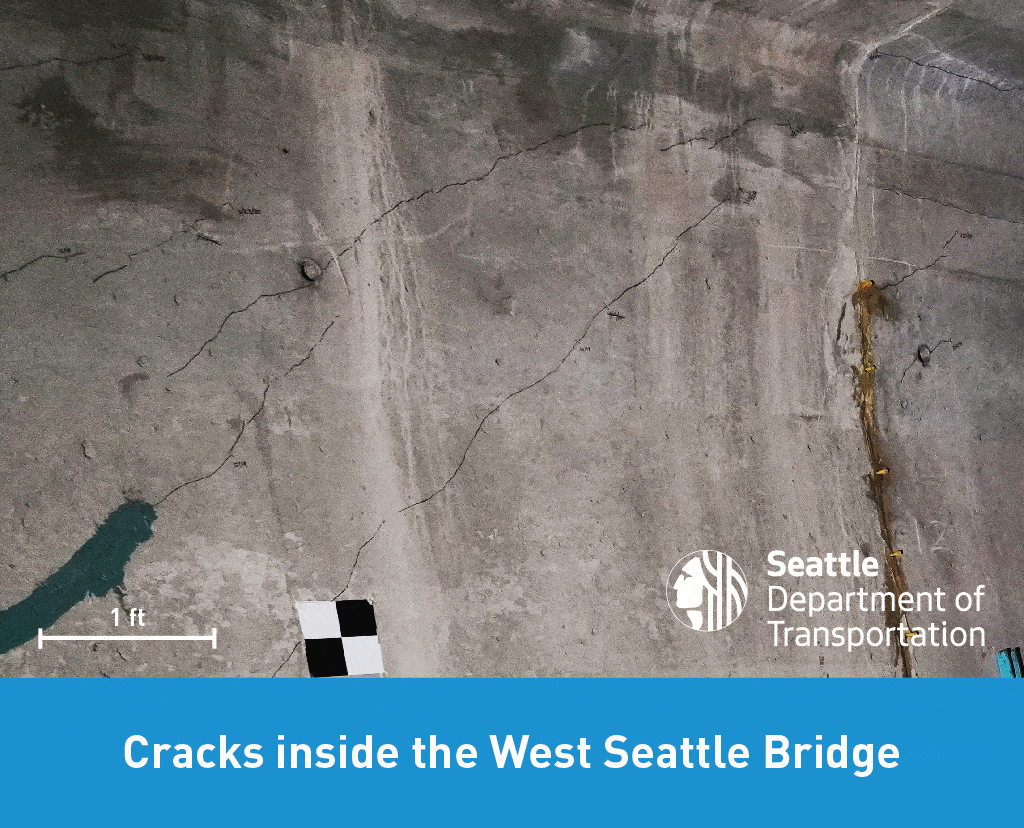 Photo of West Seattle High-Rise Bridge. City of Seattle photo
Photo of West Seattle High-Rise Bridge. City of Seattle photo The Seattle Department of Transportation is committed to transparency and keeping the public informed.
The West Seattle High-Rise Bridge inspection reports from 2013 through 2020 are posted on our website. We share these important reports to give you access to the documents that informed our decisions over the years.
What we believe the reports show is our careful, proactive monitoring effort that put into place the systems necessary to make sure we could act quickly to preserve life and safety. Additionally, they show that during our frequent inspections of the West Seattle Bridge over the past several years, there was no indication that the bridge was unsafe for ordinary use or that preventative maintenance plans would impact normal use of the bridge until very, very recently.
Documents shared with the public today include:
- Initial crack memo in 2013, special inspection memo in 2013, and technical assessment memo in 2014 from consultant indicated some cracking that should continue to be monitored
- Inspection reports from 2013, 2014, 2015, 2016, 2017, 2018, 2019 and late 2019 show monitoring of cracks and recommendations from each year
- Memo from consultant in 2019 suggested sealing cracks with epoxy and further monitoring of cracks
- Memo from consultant on 2/21/20 suggested the bridge should be reduced to two lanes each way and repairs initiated before end of year 2020
- Memo from consultant on 3/20/20 that indicates a further review of 2019 inspection report data suggests immediate closure

All modern concrete bridges are built with the expectation that some cracks will eventually form.
During a 2013 routine inspection of the West Seattle Bridge, our inspectors discovered four sets of such cracks in the bridge support structure. Again, although some cracking is normal, we decided to increase our monitoring to inspect the bridge every year and, in 2014, installed real-time data collection equipment to aid in these effort. The equipment allowed us to remotely monitor the width of existing cracks on the bridge.
In 2019 we observed the crack growth rate increasing. In response, we increased our observation frequency again and accelerated additional analysis to better understand the situation.

In late February 2020, our engineering consultant recommended that we restrict traffic to two lanes in each direction until the bridge could be repaired. They recommend that this be done within the 2020 calendar year.
We reviewed their analysis and came to the same conclusion in early March. We began preparing to share that news with key stakeholders and the public, but, before we could do this, our engineering consultant notified us on March 19 that they had refined their analysis which indicated that the cracks might grow faster than previously thought.
Our Director of Roadway Structures visited the bridge every day from March 20-23 to observe the bridge from several locations above, below, and inside the bridge. On the fourth day of observations, March 23, he discovered new cracks while investigating a section of the bridge that had previously been observed to have crack defects (pictured below).
We do not take chances when it comes to public safety. As soon as we confirmed that cracking had rapidly accelerated, we immediately put in motion a plan to close the bridge that day.

Stay up-to-date with our latest information on the West Seattle High-Rise Bridge.
Visit our West Seattle High-Rise Bridge website to view the reports, see frequently asked questions and answers, stay up-to-date on our latest bridge information, and sign up for project update emails.